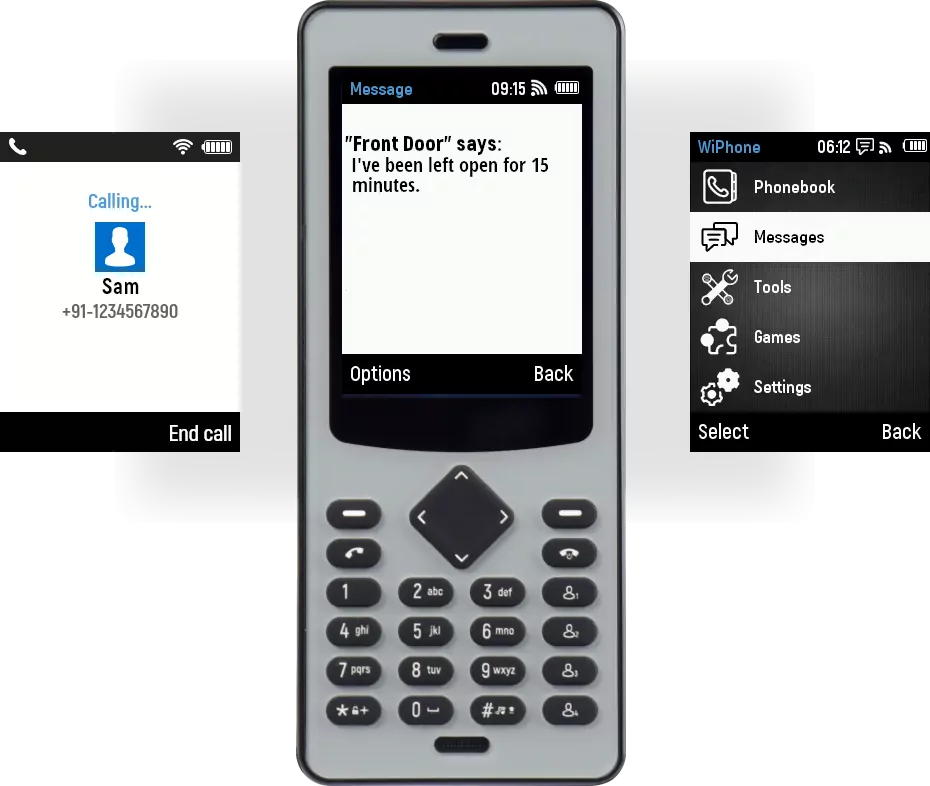Wiphone: An OpenSource Phone Project
The Wiphone is a niche mobile phone designed specifically for software and hardware enthusiasts, especially those who enjoy tinkering with electronics and developing custom projects. It stands out from typical smartphones by offering unique features that cater to makers, hackers, and developers who want a highly customizable, open-source mobile device.
Key Features
1. Modular and Open-Source Design:
One of the most significant aspects of Wiphone is its modular design. The phone is not only meant for use as a regular mobile phone but also serves as a development platform. With fully open hardware and software, Wiphone provides users with complete control over the phone's functionalities. Enthusiasts can modify everything from the operating system to the individual components, making it ideal for people who want to create their custom modifications or extensions to the phone's functionality.
2. ESP32-Based Platform:
The Wiphone is built on the ESP32 chip, a popular microcontroller with built-in Wi-Fi and Bluetooth capabilities, frequently used in IoT (Internet of Things) projects. This makes the Wiphone not just a phone, but also a powerful development tool for projects that involve wireless communication. The ESP32's extensive support within the maker community, including libraries and development environments, makes the Wiphone accessible for developers of all skill levels.
3. Voice Over IP (VoIP) Focus:
Unlike typical mobile phones that rely on cellular networks for communication, Wiphone is designed primarily for Voice over IP (VoIP) communications. This allows users to make calls via Wi-Fi, reducing the reliance on traditional cellular services and giving them more freedom to control how their communications are managed. VoIP can offer significant savings on communication costs and provide greater privacy, depending on how it’s configured.
4. Customizable Case:
The Wiphone's case is also customizable, allowing users to 3D print their own designs if they wish. This adds another layer of personalization for those who want their device to reflect their individual style or who need a specific form factor for their projects.
5. Basic UI and Features:
While the Wiphone is packed with features for developers, its user interface and software environment are quite basic compared to mainstream smartphones. It does not run Android or iOS; instead, it operates on a minimalistic interface that allows users to make and receive calls, send text messages, and run custom applications. The simplicity of the UI makes the phone faster and more power-efficient, as there are fewer background processes running.
6. Community-Driven Development:
Wiphone is supported by a strong community of developers and tinkerers who actively share their modifications and improvements. Whether it’s adding new hardware components or developing innovative software solutions, the collaborative environment around Wiphone encourages users to experiment and learn from each other.
7. Hardware Customization:
One of the major attractions of Wiphone is its easy hardware extensibility. Users can access the phone's internal components and modify them to add features like sensors, custom input methods, or additional connectivity options. This flexibility makes the phone an excellent tool for prototyping IoT devices or for experimenting with new technologies.
Use Cases
- Learning Platform: Wiphone serves as a hands-on tool for those interested in learning about hardware and software development. Its open nature means that developers can experiment without restrictions, gaining experience in areas like embedded systems, networking, and real-time processing.
- Custom Communication Devices: Makers who need specialized communication devices can use the Wiphone as a foundation for their projects. For instance, it could be turned into a walkie-talkie, an emergency communication device, or even a secure communication terminal with custom encryption.
- IoT Projects: Due to the ESP32's integration, Wiphone is ideal for IoT applications. Developers can use it to control smart home devices, build remote sensors, or develop other wireless-connected projects.
- DIY Enthusiasts and Hackers: The modularity and open-source nature of Wiphone make it appealing to hobbyists who enjoy building their hardware from scratch. Users can add components like additional memory, specialized sensors, or entirely new connectivity options (such as long-range radio modules) to suit their project needs.
Limitations
While Wiphone provides a powerful platform for certain types of development, it does have limitations. For one, its VoIP-only design means that it cannot connect to cellular networks unless modified. This can be seen as a downside for those who require traditional mobile network services. Additionally, the lack of a full-fledged app ecosystem (as seen in Android or iOS) might deter users looking for a more polished smartphone experience. Wiphone’s minimalistic interface is practical but not comparable to mainstream smartphones in terms of usability for daily tasks.
Another limitation is its relatively low processing power compared to modern smartphones. The ESP32, while a versatile chip for IoT and lightweight applications, does not have the same raw performance as the processors found in high-end smartphones. This makes the Wiphone more suitable for simple or specific tasks rather than handling resource-intensive applications.
Conclusion
The Wiphone is a unique product in the world of mobile devices. Its appeal lies not in competing with mainstream smartphones but in offering a customizable, open platform for developers, hackers, and makers. By focusing on modularity, open-source principles, and VoIP communication, it fills a niche for those who want more control over their devices. While it may not be suited for everyone, the Wiphone is a powerful tool for learning, experimentation, and developing custom hardware and software projects.




